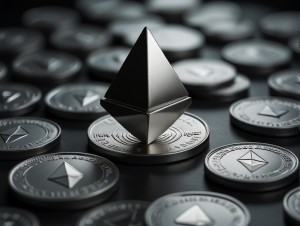The blockchain community finds itself divided over the introduction of the ERC-404 token standard, with opinions ranging from excitement to skepticism. This novel standard, which blends aspects of ERC-20 and ERC-721 protocols, has stirred both praise and criticism among industry experts.
ERC-404 revolutionizes tokenization
ERC-404, conceived by pseudonymous developers behind the Pandora project, merges the functionalities of ERC-20 and ERC-721 tokens. Its unique proposition lies in the fractionalization of NFT ownership, allowing multiple wallet holders to share ownership of a single NFT.
This innovation has particularly intrigued enthusiasts in the realm of fractionalized NFTs, where assets like the Bored Ape Yacht Club are divided among investors.
The first Pandora ERC-404 token, issued on has witnessed an astounding 530% return, currently trading at $23,484 with a market cap of $235 million. Notably, developers plan to address protocol gas fees, aiming for a significant reduction of 28% to 50% shortly.
Many of you guys have been asking about optimization for ERC404 and how we plan on scaling and improving on the standard, so we thought we'd share some preliminary test results!
— Pandora (@Pandora_ERC404) February 13, 2024
The following is still in development, so the numbers on release may look a little bit different -… pic.twitter.com/dfr2A0CrUr
ERC-404: Mixed reaction highlights adoption concerns
While some hail ERC-404 as a “game changer,” others express reservations regarding its adoption and technical adherence to Ethereum standards. Miguel Prada, co-founder of Diva Staking, voices concerns over ERC-404’s departure from established ERC procedures, potentially hindering its integration and acceptance within the ecosystem.
Prada emphasizes the uncertainty surrounding ERC-404’s utility for Ethereum, citing its deviation from standardization as a significant limitation.
Ryan Lee, chief analyst at Bitget Research, echoes similar sentiments, noting ERC-404’s experimental nature and absence of formal inclusion in the Ethereum Foundation’s ERC standard. Lee highlights existing protocols within the ERC standard, such as ERC3475 and ERC3525, which already explore the fusion of fungible and non-fungible tokens.
Potential and risks: A balancing act
In contrast, Akash Mahendra, head of developer relations at Haven1, lauds ERC-404 as a potential catalyst for real-world asset tokenization on Ethereum. Mahendra sees ERC-404 as a groundbreaking advancement, offering users exposure to both ERC-20 and ERC-721 functionalities within a single token.
This integration, akin to owning an “exchange-traded fund in the decentralized finance world,” opens avenues for diverse utility and investment opportunities.
However, Mahendra and others caution against premature excitement, as ERC-404 awaits official acceptance and review as an Ethereum Improvement Protocol.
Without the Ethereum Foundation’s stamp of approval, investors face heightened risks associated with unaudited protocols, including potential vulnerabilities and losses.





